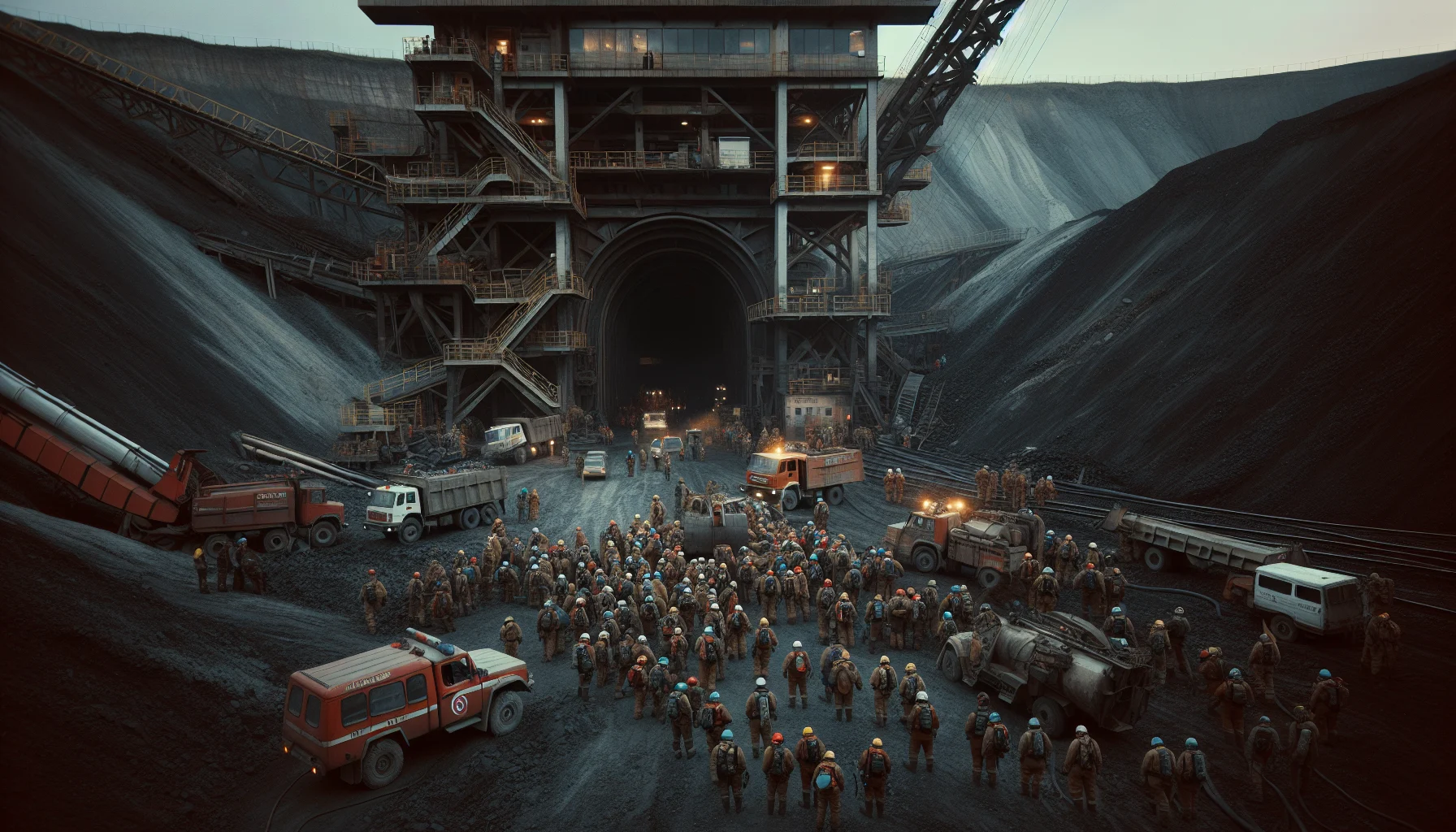
Soma Mine Disaster
by: The Calamity Calendar Team
May 13, 2014
The Darkness Below
The afternoon of May 13, 2014, in the small town of Soma, nestled in Turkey’s Manisa Province, was a seemingly ordinary one. The skies were clear, as miners at the Soma Coal Mine continued with their daily grind. Unknown to them, their world's balance was teetering over an abyss. The disaster that unfolded would not only scar the land but would reverberate through every level of Turkish society and beyond.
Deep-Set Faultlines: A Precarious Foundation
To understand the scale of the disaster, we need to look back at the bedrock of the Turkish mining industry—one that has been fraught with peril for decades. The Soma Coal Mine was managed by Soma Kömür İşletmeleri A.Ş., and for years before the tragedy, whispers of unsafe working conditions circulated widely. Although the company maintained that all necessary safety measures were in place, insiders reported a different story—one of neglect and outdated safety equipment, of protocols seldom enforced, and toxic work culture, ripe for catastrophe.
This was no secret. Interviews over the years painted a grim picture of an industry laboring under ancient practices and indifference. Safety audits, when conducted, rarely brought about change. There seemed to be an unspoken pact between time and the mine—a stubborn refusal to modernize, a damning reluctance that would soon have tragic consequences.
A Day Like Any Other, Until It Wasn’t
The clock ticked slowly that afternoon inside Soma’s tunnels. As miners engaged in their work, the earth began its silent betrayal. A fire ignited deep within the mine, during a critical shift changeover. What possibly started as a spark, an electrical fault, or a well-known phenomenon of spontaneous combustion of coal, quickly snowballed beyond control. Poisonous carbon monoxide, the silent killer in this drama, began its deadly ascent.
As the first cries for help echoed through the corridors, initial confusion quickly gave way to terror. Rescue operations were initiated immediately. But in a place where time equaled dwindling air and hopes of survival, urgency was a cruel master. Rescuers armed with oxygen masks and basic tools worked tirelessly to extract survivors and the dead. As night fell and then day broke again, they continued, battling high concentrations of toxic gases that stifled every step.
The Aftermath: A Nation Grieves
When the dust settled, 301 miners were confirmed dead—Turkey’s deadliest mining disaster. The loss was staggering, and the nation was in mourning. Families and communities that had silently borne the weight of generations of miners now had their grief laid bare for all to witness. A total of 487 workers had been below the surface that day, and the numbers carved a stark reminder into the country’s consciousness.
Thanks for subscribing!
The aftermath was swift yet carries a sluggish undertone when measured against the cost of human lives. Surges of criticism and the fiery tempest of public protest rippled through Turkey. The government, castigated for lax oversight and regulatory enforcement, was forced to confront the glaring deficiencies laid bare in the mine's very bowels. Compensation, while necessary, paled in comparison to the loss, sparking debates on the value of human life over profit.
A Call for Justice and Reform
In the search for accountability, arrests and prosecutions of several executives and managers at the mine began. Trials aimed to deliver justice, albeit a form that straddled the complexities of corporate culpability and individual responsibility. Public outrage was matched by a legal system that sought to reconstruct what had long been a regulatory charade.
Laws were reengineered. Protocols were replanned, and a renewed promise to workers became the clarion call of both government and corporate boards. Inspection protocols saw revampment, yet the onus of implementation hung heavily.
Taking Stock Years On
Years have passed since that harrowing day. The mine's infrastructure is reflective now of an era that commemorates with caution and sober fixity. As the wheels of justice continue to turn in the courts, this somber narrative holds a mirror to the state of worker safety in Turkey and around the globe.
What emerged from the darkness of those tunnels was not only an urgent plea for safeguards but also a reminder of the thin line between routine and disaster in lives lived at the coal face. The legacy of the Soma Mine Disaster remains a lesson, etched into the annals of industrial history, urging reminders that safety must never be a gamble, but a keystone of dignity.
Stay in the Loop!
Become a Calamity Insider and get exclusive Calamity Calendar updates delivered straight to your inbox.
Thanks! You're now subscribed.